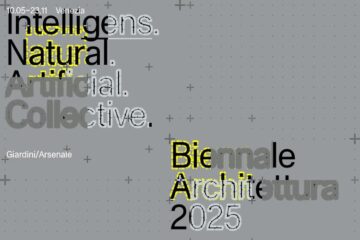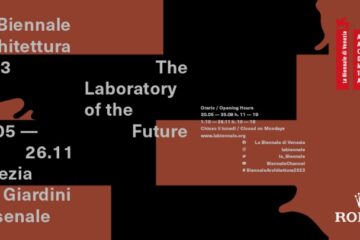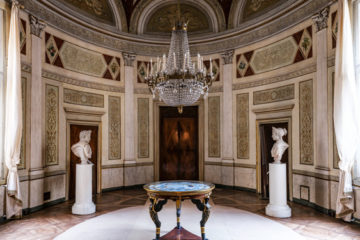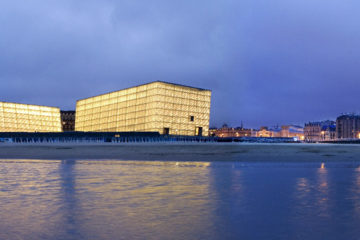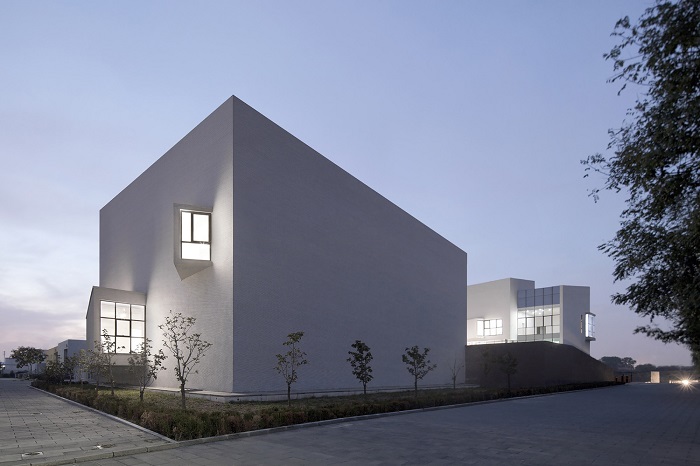
The client of the Spring Art Museum (China) by Praxis d’Architecture, is a local who believes in contemporary art, and intended the museum to be a platform to promote young artists. The two main programs of the museum are for art exhibition and artist residence.
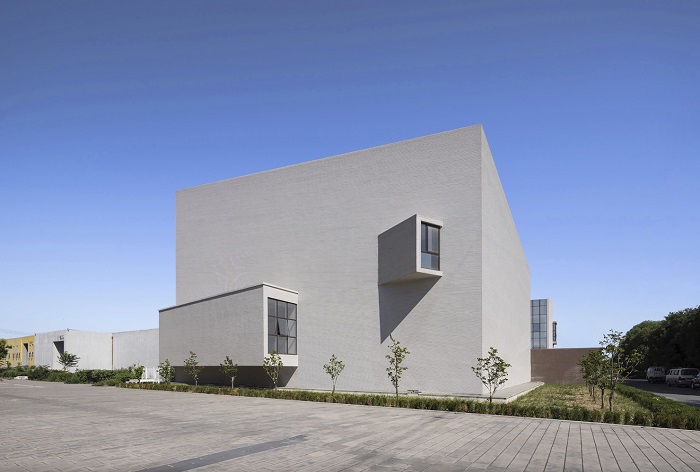
In the design Praxis d’Architecture sought a piece of architecture that is open, culturally rooted, and arousing a feeling of sublimity – a noble condition of human instinct, which they believe, although through different means, shares the same purpose as the art it accommodates.

The building massing was resolved into a U shape that recalls traditional triple house courtyard familiar to the local people. The courtyard faces a road on the east side and provides entries to the main exhibition spaces. There is an uninterrupted path from the road level to the courtyard and then all the way to the roof, which facilitates outdoor art display, draws activities in and blurs the boundary between roof and facade.
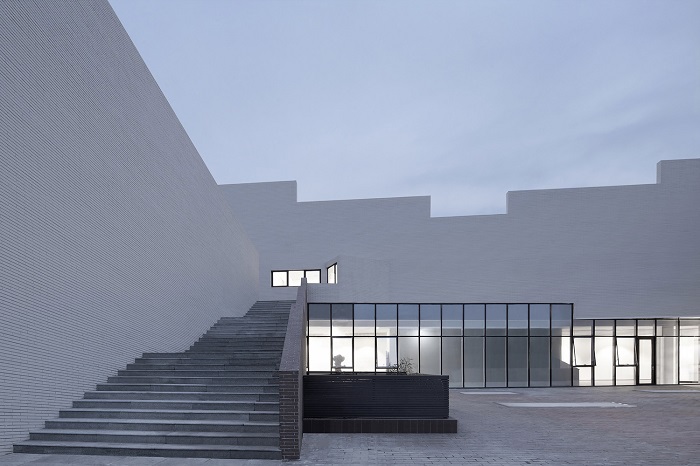
Raised by 1.6m above the road level in the south and east, the courtyard is roof to the ground floor to be entered from north and west. Two sunken gardens punctuate one level down to reach the earth, allowing big trees to grow out, as well as providing natural light and ventilation to the ground floor that holds some dark spaces, a lounge, and several studios for resident artists.
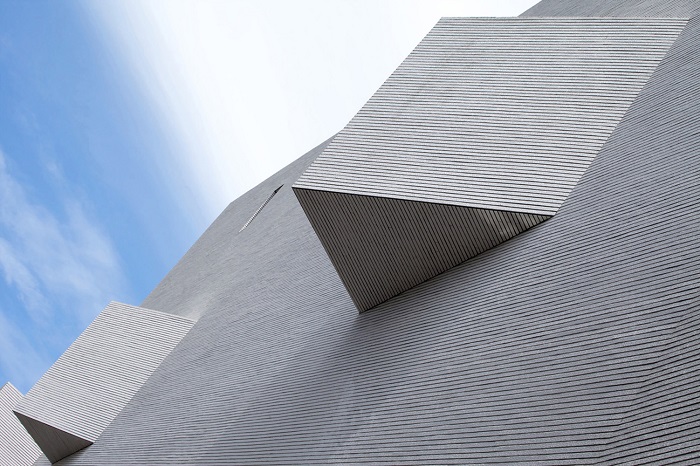
The roof comprises series of terraces at different levels, and the height difference allows skylight into major exhibition spaces in which the ceiling profile corresponds to that of the roof. The spaces with various heights and proportions allow flexibility in exhibiting art. Aluminum grid hanging ceiling is chosen to conceal structure, MEP equipment and integrate natural light and artificial light into a uniformed materiality to achieve a clean, consistent and neutral atmosphere optimized for showing art.
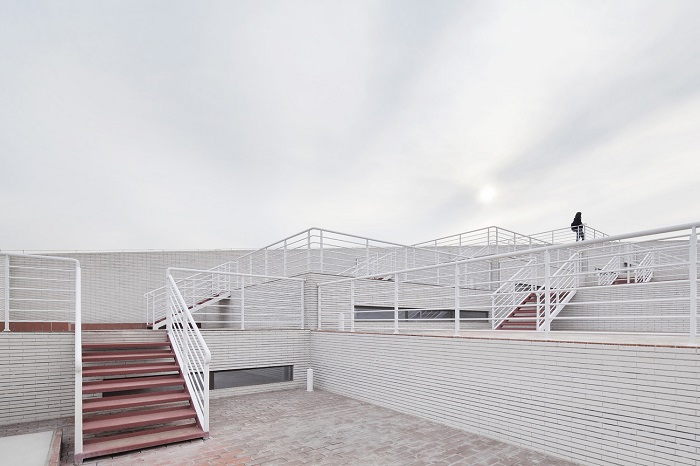
To receive outside views from inside was one of the aspirations of the design. The views are attentively revealed through a few precious protruding windows in the major exhibition spaces, making room for one to contemplate on the sight of reality before returning to art.
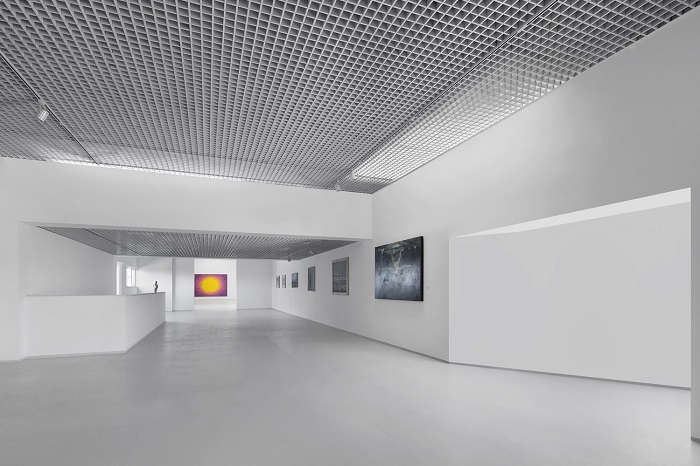
The exterior wall is applied with wall tile that is economical and readily available in the market, the tiling style, however, shows a refined materiality that is in contrast to the surroundings, and further speaks of fluidity present in the spatial sequence of the architecture.
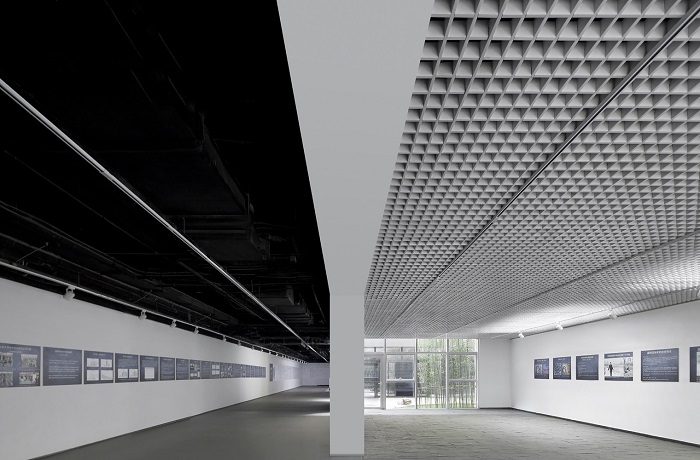
Images courtesy of Xia Zhi, Jin Fengzhe, Zhou Ruogu and Praxis d’Architecture
Discover: www.praxisdarch.com
